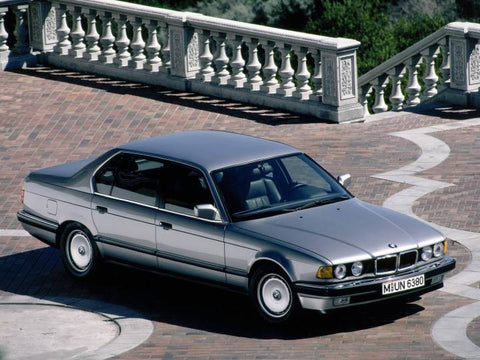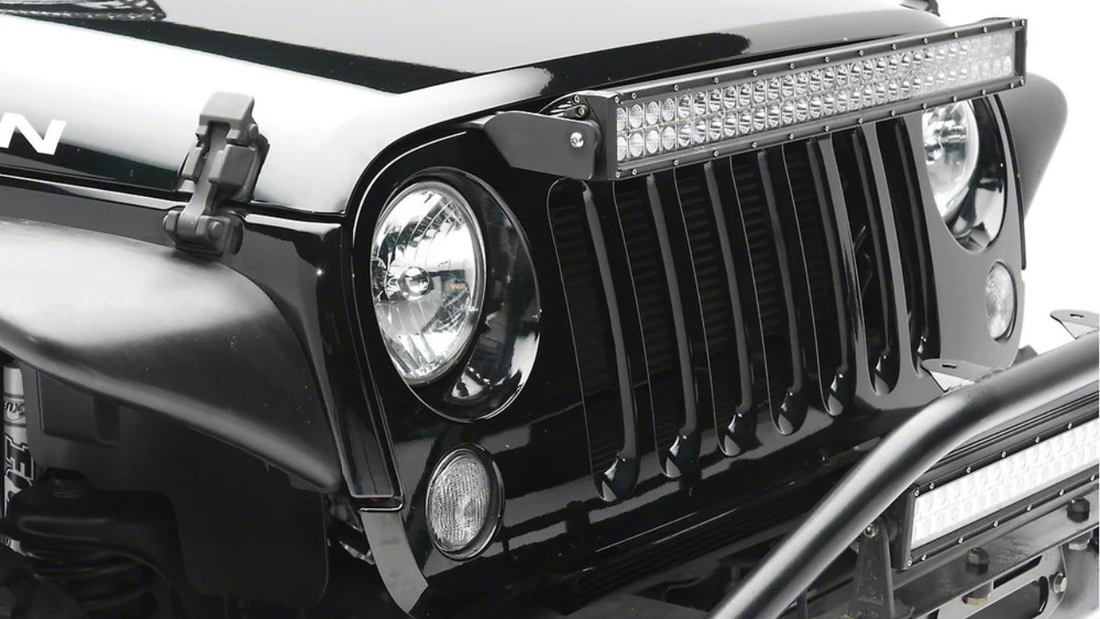As there is a large number of criteria to take into consideration when choosing your next set of lights, we simply wanted to take the time to briefly go over the different types of automotive lighting, the history of, the pros and cons of each, to ultimately give you all the information you should need to make the best decision when it comes to purchasing a set of premium lights that will work best for your specific situation(s).
In 1885, the German Karl Friedrich Benz invented the car, and the lights have evolved over the past 100 years. From chemical lamps to electric lights, electric lamps from incandescent, halogen, xenon, LED, laser. Here is a brief history of the evolution of headlights:
1.Kerosene lamp
Time of use: 1886-1904

When the car was just born, there was no other function besides running, and there was no car lamp, so the kerosene lamp on the carriage became the earliest car headlight. But kerosene lamp's luminous intensity is too low, driving at night is not safe, so people put Kruping reflector behind kerosene lamp, making kerosene lamp a "spotlight", which is the rudiment of car lamp.
2.Acetylene
Time of use: 1905-1925

Although incandescent lamp was used as vehicle lamp as early as 1898, due to the fragile service life of carbon filament and immature vehicle generator technology, acetylene lamp with higher brightness and relatively mature stability became the first choice of vehicle headlamp at that time.
The working principle of acetylene lamp is not complicated. First, acetylene is produced by acetylene generator on pedal or frame, then it is ignited and illuminated to achieve the purpose of illumination. Sloshing during driving creates conditions for the production of acetylene, but in case of traffic jam, the reaction will weaken, acetylene production will decrease, and the lamp will gradually darken.
At that time, the advantages of acetylene lamp were mature technology, high brightness, water and wind resistance than kerosene lamp; the disadvantages were also obvious: burning light means still afraid of water, especially in rainy days driving would be more troublesome. In addition, the use of car lights will produce a large amount of alkali lime, falling on the skin will produce strong irritation and corrosiveness, and the concept of safe driving is also contrary, so it will once again promote the change of car lights.
3. Halogen lamp
Time of use: Early 2000s

The first Mercedes-Benz 350SL with halogen lamps
Until now, many entry models are still using halogen lamps. Although the light emitted by the halogen lamp is a bit yellow, the penetration of the yellow light is strong, and it is farther away in the rain, snow and fog. Although the halogen lamp has many advantages, more and more car owners start to dislike it, such as fast speed. It is not bright enough to guarantee the safety of pedestrians and cars. The power is quite high and the life is not high.
4.Xenon headlamps
Time of use: 1992-present

The first one used Xenon headlights 1992 BMW 7 Series
The Xenon lamp, which was introduced in 1991, better compensates for these shortcomings of halogen lamps. The principle of the xenon lamp is to directly fill the quartz tube with high-pressure inert gas, and then pass 23000 volts of high-voltage electricity to make the lamp cavity emit white light close to daylight. Xenon lamps solve the shortcomings of halogen lamps, which have high brightness, low energy consumption and long life. Good things are always a little expensive, so they are generally used in mid- to high-end models. The BMW 7 Series, released in 1992, is the first model to use xenon headlights.
5.Light-emitting diodes (LEDs)
Time of use: 2004-present

The first LED lights were used in the Audi A8’s daytime running light (DRL) assembly. These lights are long-lasting and consume little energy to produce an excellently bright stream of light. The Lexus LS 600h was the first car to use LED low beams in 2006. By the following year, the V10 Audi R8 was the first car completely outfitted from front to rear in LED lights. This was made possible with the modification of using 25 LEDs in each headlight with adaptable settings to dim individual diodes as required to avoid blinding other drivers.
6. Today: Laser Lights
BMW introduced laser beam technology for manufacturing headlights. Three diodes emit a blue laser into a prism to focus the lights into one beam. The light travels through a lens that changes the blue to white before reflecting out onto the roads. Laser beams are able to emit light out to approximately1.25 miles. Video technology assists in adjusting the settings to avoid dazzling other motorists.

The headlights you see on cars today evolved from humble beginnings to provide optimal brightness without draining a lot of fuel. From acetylene lamps to lasers, manufacturers have made great strides to help us navigate dark roads while sharing the roads with an ever-growing population.

